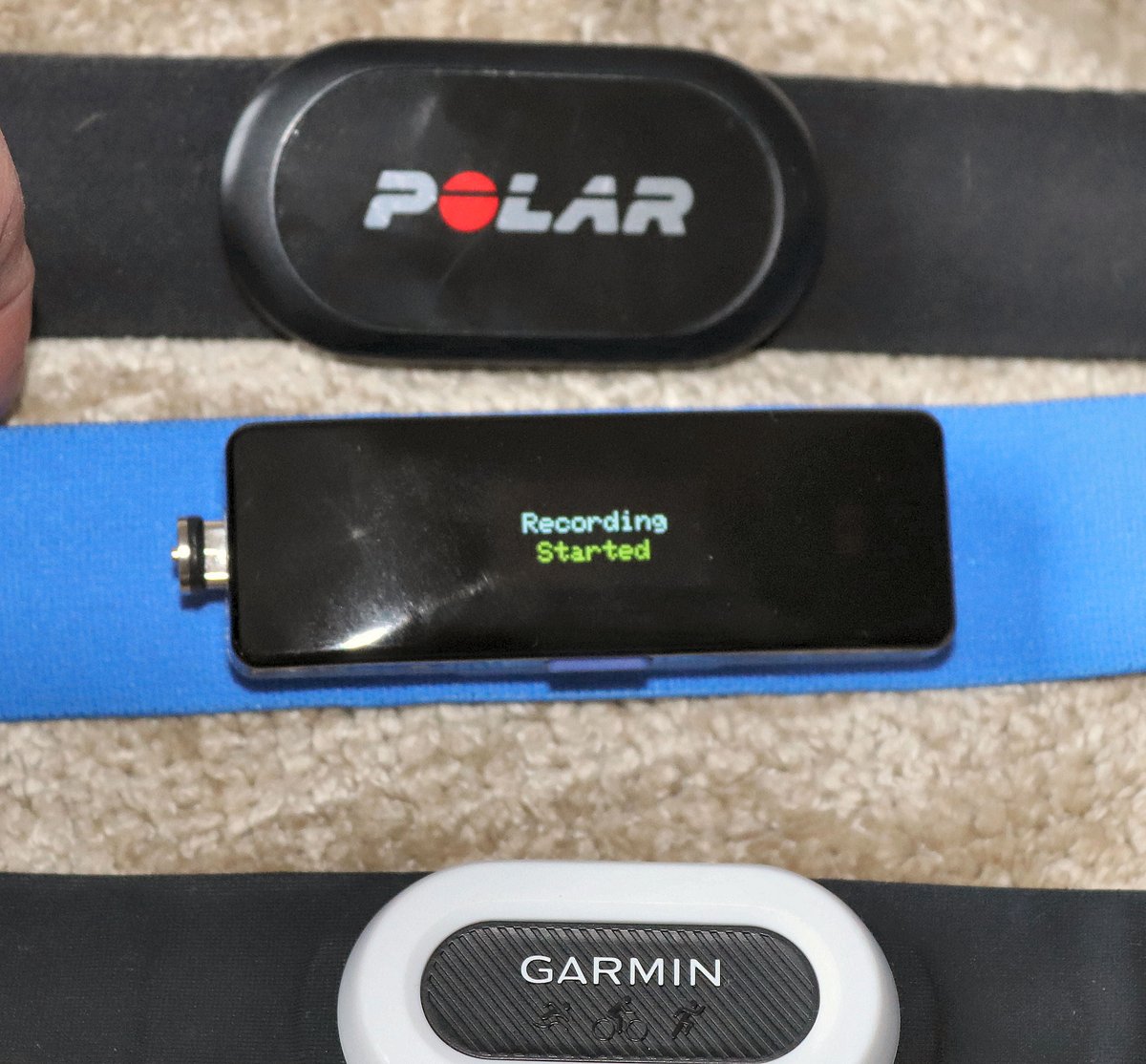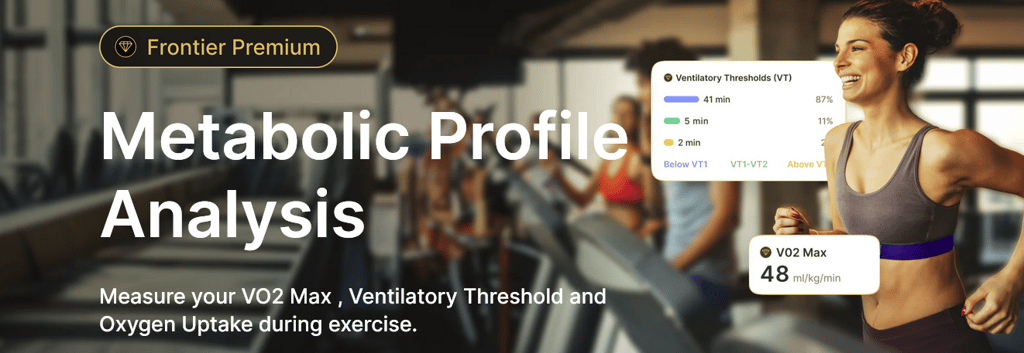 A new way to pace endurance efforts: using Ventilatory Thresholds for Running and Triathlon Training
A new way to pace endurance efforts: using Ventilatory Thresholds for Running and Triathlon Training
Ventilatory Thresholds (VT) occur when breathing becomes disproportionately heavy relative to oxygen consumption (VO₂). As you try harder, lactate accumulates, leading to increased CO₂ production. You must breathe more to expel it, and the breathing pattern changes.
More: Fourth Frontier X2 Review
The Two Key Ventilatory Thresholds were historically assessed based on the “talk test” and the “gasp test”. The lower threshold, VT1, is where breathing becomes noticeably deeper or more rhythmic, but conversational speech is still possible in short sentences. Physiologically, this indicates a shift from primarily fat-based to fat+carb fuel metabolism. The upper or second threshold, VT2, is where breathing becomes very laboured, and speaking is limited to single words or gasps. This marks a substantial shift to carbohydrate metabolism, rapid lactate accumulation, and the onset of metabolic acidosis.
VT is one way that athletes can establish personalised training zones. Whilst you don’t need tech to recognise the thresholds, it can determine the points with greater accuracy. Historically, gas exchange analysis has been required using expensive indirect calorimetry equipment in a laboratory setting.
Fourth Frontier X2: VT Analysis and more
The Frontier X2 chest strap provides real-time metabolic profile analytics by continuously monitoring key metrics, estimating VO2 Max, Ventilatory Threshold, and Oxygen Uptake during exercise.

It captures continuous ECG signals to detect reliable heart rate and breathing patterns during exercise and then shows your live position relative to VT thresholds—a practical, noninvasive method for tracking these critical physiological points outside a lab.
Applying Frontier X2’s VT Zones for Optimal Running and Triathlon Training
You either plan to follow a zone-based plan or seek a tool to indicate that you are achieving your desired physiological adaptations. Unlike traditional tests based on LTHR or HRmax determined zones, a key benefit of using VT is that it will track all variations in your threshold levels during the workout or from day to day.
The current trend for endurance athletes suggests you follow polarised training models, where you spend ~80% of training below VT1, 20% above VT2, and minimal time between VT1 and VT2.
The specific adaptations you should experience are well documented:
Below VT1 (Easy, Long-Lasting Pace):
- Benefits: Enhances fat oxidation, increases mitochondrial density, improves capillary networks, and builds base endurance.
- Application: Ideal for long, slow distance (LSD) training (runs, rides, swims) where athletes can maintain a conversational pace. This is crucial for building an aerobic foundation, especially during base training.
- Example: Corresponds to Zone 2 in a 5-zone model, often 60-70% of max heart rate or 50-60% of VO₂max.
Between VT1 and VT2 (Moderate Intensity):
- Benefits: Training here will boost endurance, delay fatigue, improve lactate clearance and buffering capacity, thus increasing the ability to sustain race-like intensities for extended periods.
- Application: In some regards, this is a “sweet spot” for time-crunched training, where you include tempo runs and threshold intervals.
Above VT2 (High Intensity):
- Benefits: Hard training improves your VO₂max and increases tolerance for acidosis and high-intensity efforts. It increases your ability to handle and clear lactate.
- Application: Used for short, high-intensity intervals (e.g., 4×4 minutes at 90-95% HRmax with equal recovery) or sprint efforts to push anaerobic capacity. Common in peaking phases or for shorter races (e.g., 5K, sprint triathlons).
Fourth Frontier X2
24x7 ECG, Real-Time Alerts and Sports Tracking.
VT’s Relationship with Other Physiological Thresholds and Frontier X2’s Context
The Aerobic Threshold (AeT) roughly corresponds to VT1, and the Anaerobic Threshold (AnT) / Lactate Threshold (LT) / Maximal Lactate Steady State (MLSS)* to VT2.
A Frontiers in Physiology study (Cerezuela-Espejo et al., 2018) found
- LT to be a solid predictor of VT1, and
- LT+3.0 mMol·L⁻¹ is a solid predictor of VT2 in runners.
The same study stated that Maximal Lactate Steady State (MLSS) is a distinct physiological event occurring between VT1 and VT2 in runners, (*) not quite coinciding with VT2 as traditionally assumed. MLSS was highly associated with LT+1.0 mMol·L⁻¹.
While the Frontier X2 does not measure blood lactate directly, its real-time VT estimates provide a non-invasive way to track these critical metabolic shifts.
Buy Fourth Frontier with 30% Discount. Automatically added
Practical Implementation for Runners and Triathletes with Frontier X2
For more technically advanced runners, Frontier X2 could be used to assess the reasonableness of the zones you already use, or for those new to Zone-based training, it represents an easier way to get started without the need to perform a maximal test to use Zones based on HRmax formulae that are likely to be wrong.
Triathletes who realise that traditionally set Zones based on LTHR will vary by sport might find those from VT more accessible. They will likely also change between sports, but it might help the athlete better develop their understanding of swimming, cycling, and running by feeling and determining if they can do that ‘accurately’.
VT2 might match a decent 10K pace, or even an HM pace for better runners.
Garmin Ventilatory Threshold
Advanced Garmin chest straps like HRM 600 use physiology known as Respiratory Sinus Arrhythmia (RSA) to determine breathing rates. However, Garmin doesn’t directly use or present VT1 and VT2 data.
I could only find one Connect IQ app, Motion Time, that appears to offer it.

Other interesting approaches to novel or dynamic threshold training include DDFA (dynamic DFA) by Suunto and similar Garmin Connect IQ apps that use dfa a1.
Take Out
VT-based zones offer an alternative approach to setting and monitoring zones. Perhaps an easier one in many respects, and accurate in other respects. If your current training zone method is challenging to set, update or follow, why not try something familiar but different?
Ultimately, based training is a sensible way to train, backed by research and widely used in all major training platforms. VT zones are probably similar to those derived from non-lab ‘lactate’ tests, working out to exhaustion.
Remember, to get the physical adaptations you need for race day, you need the right exercise stimuli and recovery. Heart rate, breath rate, power, and feel all have their place when defining training and racing zones.
Buy Fourth Frontier with 30% Discount. Automatically added
Fourth Frontier X2
24x7 ECG, Real-Time Alerts and Sports Tracking.
Further Sources and Resources
- https://journals.physiology.org/doi/abs/10.1152/jappl.1973.35.2.236
- https://pubmed.ncbi.nlm.nih.gov/3087938/
- https://pubmed.ncbi.nlm.nih.gov/19453206/
- https://www.frontiersin.org/journals/physiology/articles/10.3389/fphys.2018.01320/full
- Fourth Frontier X2 Product Page



There is also Tymewear VitalPro
In the end does it really matter in terms of threshold estimation? Probably not, like you say it will be a parallel stream of data, that will mostly align with the rest. Maybe the insights to be gained will be more about when it starts to deviate significantly from some other data (eg. Today my Power/VT ratio seems out of whack).
i think they align until they dont align.
e.g. for me hr would be better than power over much longer durations
In the ECG context, VT is already used. It means ventricular tachycardia. It’s a bit unlucky they reused that Abkürzung.
My brain always switched to it and that would be a baaad way to pce yourself.
Lol yes, I had a supraventricular tachycardia during a race, didn’t really feel any different but the HR all of the sudden shot up to over 220 bpm. I thought Garmin HRM Pro Plus band needed a new battery or something, but when I got home Whoop also put me at over 200 for about 20 minutes, so I decided to take that episode seriously.
Never happened again to my knowledge, now I always run with a chest strap even during eash runs, so I can be sure about HR accuracy.